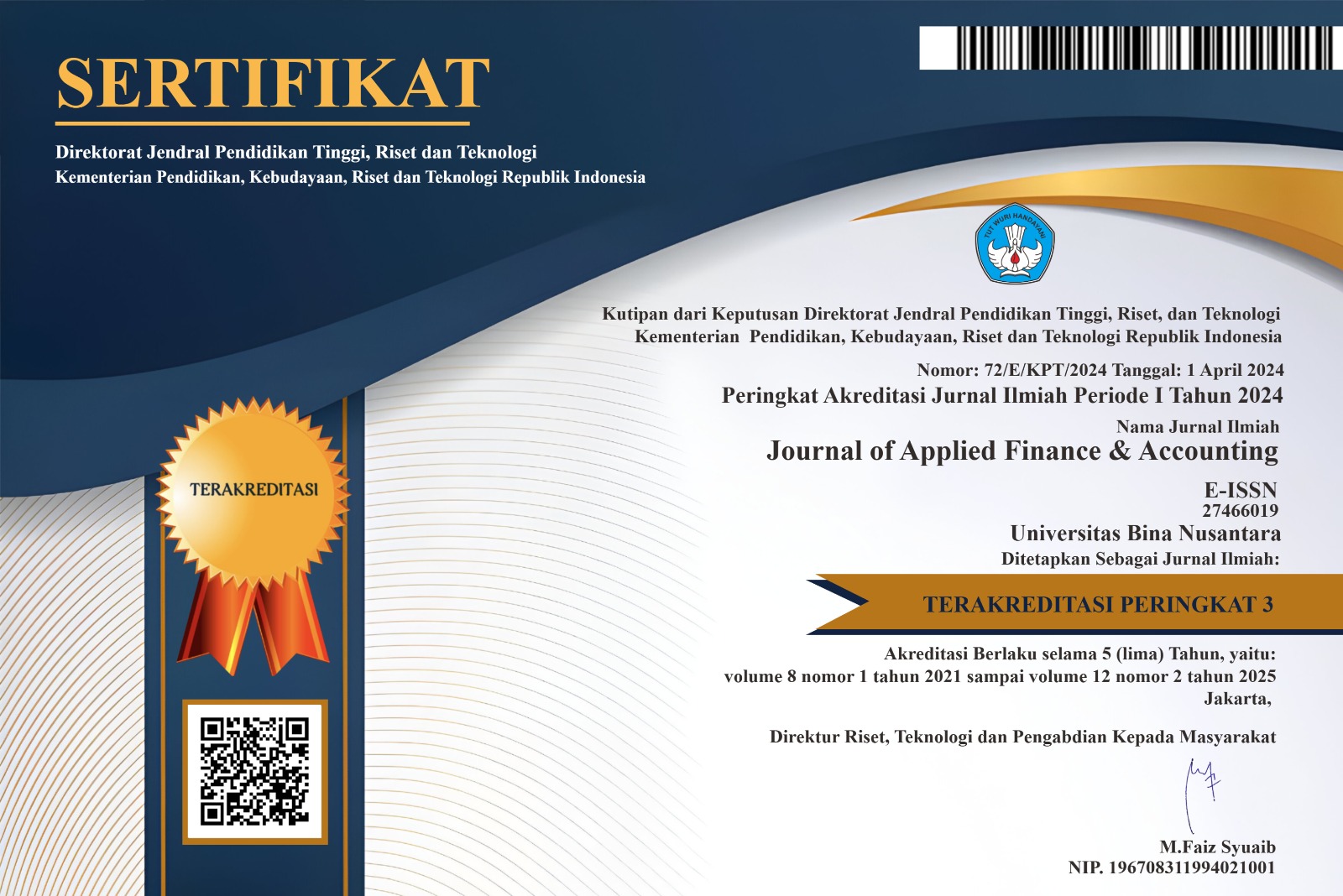INVESTIGATION TOWARDS THE LONG-RUN PERFORMANCE OF INITIAL PUBLIC OFFERINGS: EVIDENCE FROM INDONESIAN CAPITAL MARKET
DOI:
https://doi.org/10.21512/jafa.v2i2.157Keywords:
investigation, long run performance, IPO, capital market.Abstract
We study the long-term performance of IPO share issued in Indonesia during the 1996-2001 periods. The IPOs in this period are mostly concentrated in Finance, Trade, Property and Basic Industry & Chemicals. The cumulative abnormal return (CAR) and buy-and-hold abnormal return (BHAR) in the third year are 15.83% and negative 68.02%, respectively. The CAR and BHAR in the fifth year are negative 1% and negative 139.7%, respectively. The highest CAR for 3 and 5 years are mining industry, with 289.29% and 226.80%, respectively. The lowest CAR for third year is trade, service & investment industry, with negative 59.36% and fifth year is agriculture with negative 59.72%. The lowest BHAR for third and fifth year is trade, service and investment industry with negative 113.01% and negative 230.99 respectively. The long-run performance using cumulative abnormal return is similar with the market and cannot outperform the market. Â
Downloads
Published
Issue
Section
License
Authors who publish with this journal agree to the following terms:
Authors retain copyright and grant the journal right of first publication with the work simultaneously licensed under a Creative Commons Attribution License that allows others to share the work with an acknowledgement of the work's authorship and initial publication in this journal.
Authors are able to enter into separate, additional contractual arrangements for the non-exclusive distribution of the journal's published version of the work (e.g., post it to an institutional repository or publish it in a book), with an acknowledgement of its initial publication in this journal.
Authors are permitted and encouraged to post their work online (e.g., in institutional repositories or on their website) prior to and during the submission process, as it can lead to productive exchanges, as well as earlier and greater citation of published work (See The Effect of Open Access).




